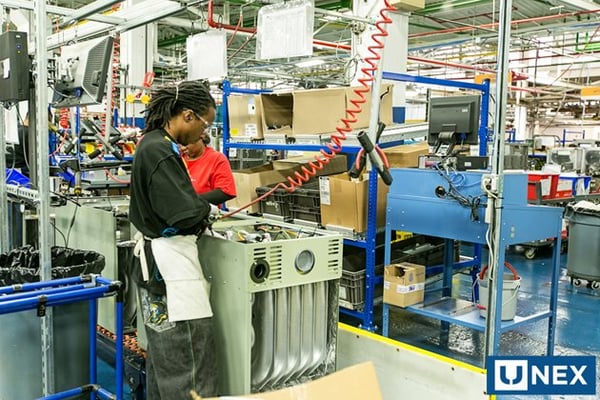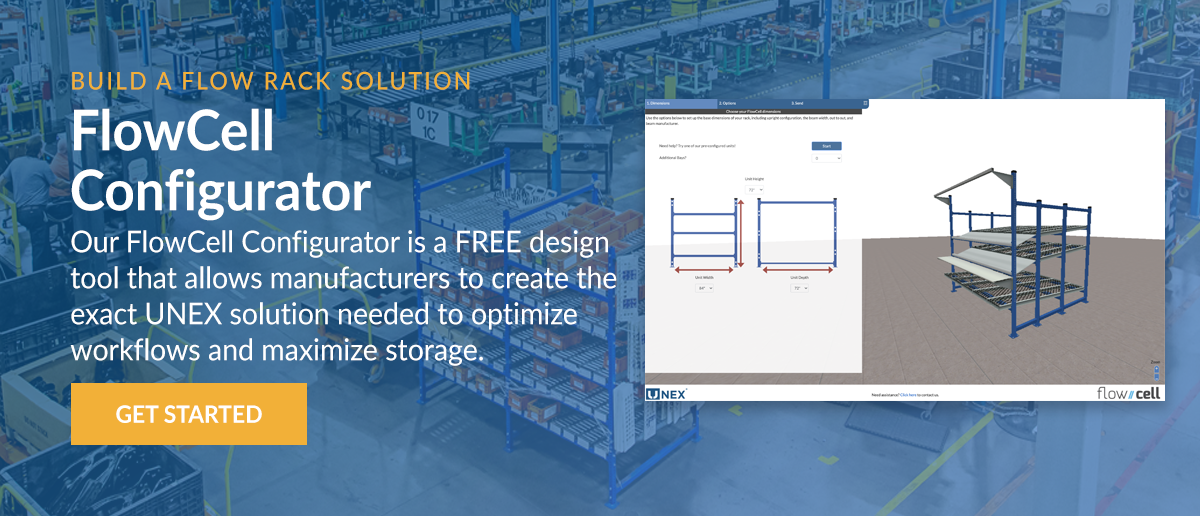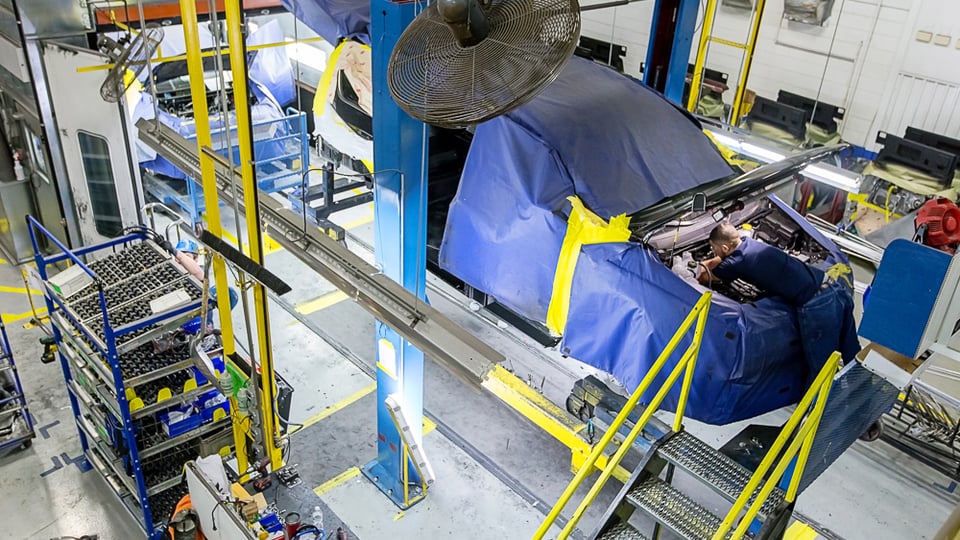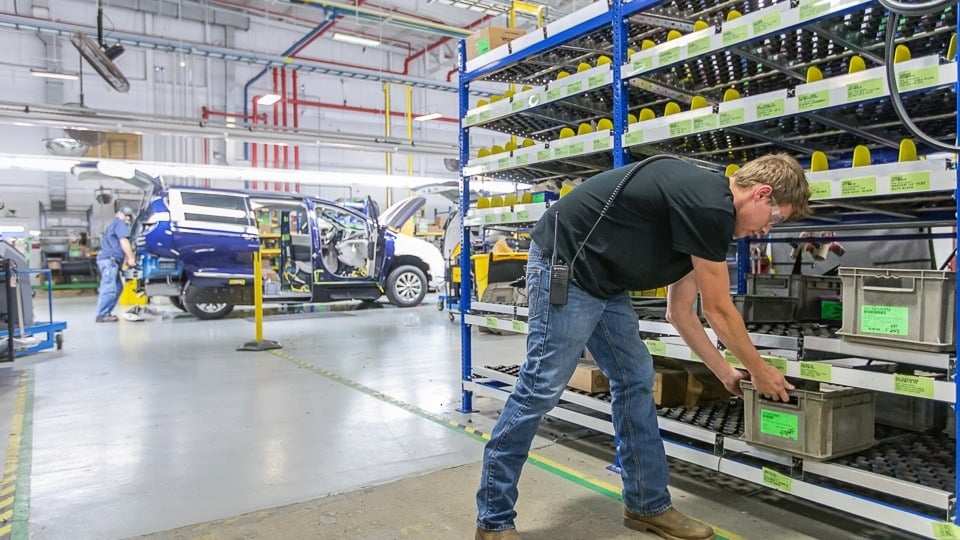Lean Assembly & Work Cells

The secret to a lean assembly work cell is the ability to eliminate waste from extra motion required to move materials to and from different locations and departments and wasted time due to inefficient communications, rework, and collaboration.
In a traditional assembly shop, the floor is divided into multiple departments with groups of similar machinery or processes. This type of work cell design does not align with the lean assembly mantra; manufacturers and assemblers create work cells where parts are assembled and then moved down the assembly line when the part is complete.
Let’s say we are building doors for automobiles. A particular piece, such as the door handle or window, would be assembled within each work cell. Each finished product travels through a series of workstations until the entire piece is complete. The process enables single-piece flow; therefore, there’s minimal product movement and fewer redundant activities from cell to cell, eliminating wasted time and movement. Benefits include reducing staging and waiting between departments and eliminating unnecessary transportation, which both shorten the time between processes.
Related Reading: Lean Manufacturing 101
To create a lean assembly workstation in your assembly operations:
- Optimize each workstation for a particular group of parts the cell will manufacture by minimizing the variety of SKUs used. Limit requirements for changeover to ensure only value-added elements are included in the process. This minimizes wastes within the operation, from overproduction to excess inventory to overprocessing, defects, and motion.
- Ensure workload is balanced and the cell is not overrun with equipment and people. Develop a plan for the physical layout of the cell by modeling people, parts, and machines, then create the best strategy for the work to be done. Consider lean methodologies when creating the physical layout, considering movement, redundancies, trash, and other things. Ensure that the work completed by one cell flows easily to another cell in a timely and efficient manner that supports lean operations. Keeping workers, parts, and machinery close makes monitoring and managing the process easier.
- Train workers to work on the equipment and perform all the work cell activities. This builds agility and flexibility into the process and ensures continued production should a worker be out for the day. When workers are cross-trained, communication is clearer so that defects can be identified quickly and the root cause identified and removed.
The goal of lean work cells is to minimize transit time, which improves productivity; simplify workflow, putting the workstations close to each other, so work flows linearly from one place to another; and eliminate wait time with each assembled piece moving quickly and efficiently throughout the entire assembly operation. These wastes, left unchecked, can be costly to your operation.
One more thought and one that is probably extremely important to your business – being agile in your assembly operations means your operation will be more adaptable, allowing your business to make quick changes based on customer and market demands.
UNEX provides lineside assembly racks that hold parts for assembly operations, improving efficiencies and increasing productivity. UNEX FlowCell is an ideal lineside storage solution, allowing users to consolidate storage on the line and reduce the footprint of lineside storage. Contact us; our space optimization specialists will help you build a solution that meets and exceeds the needs of your operation.



